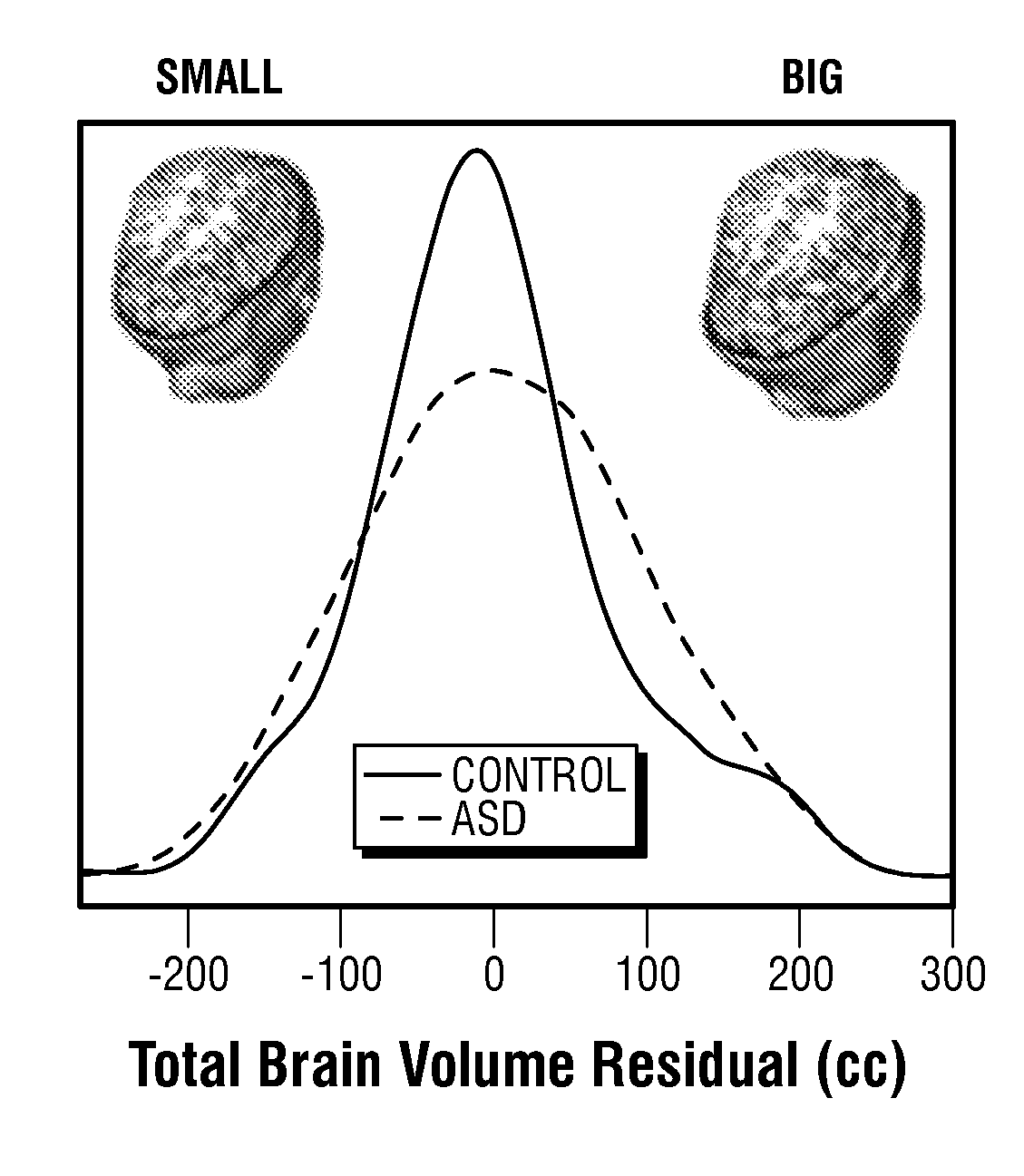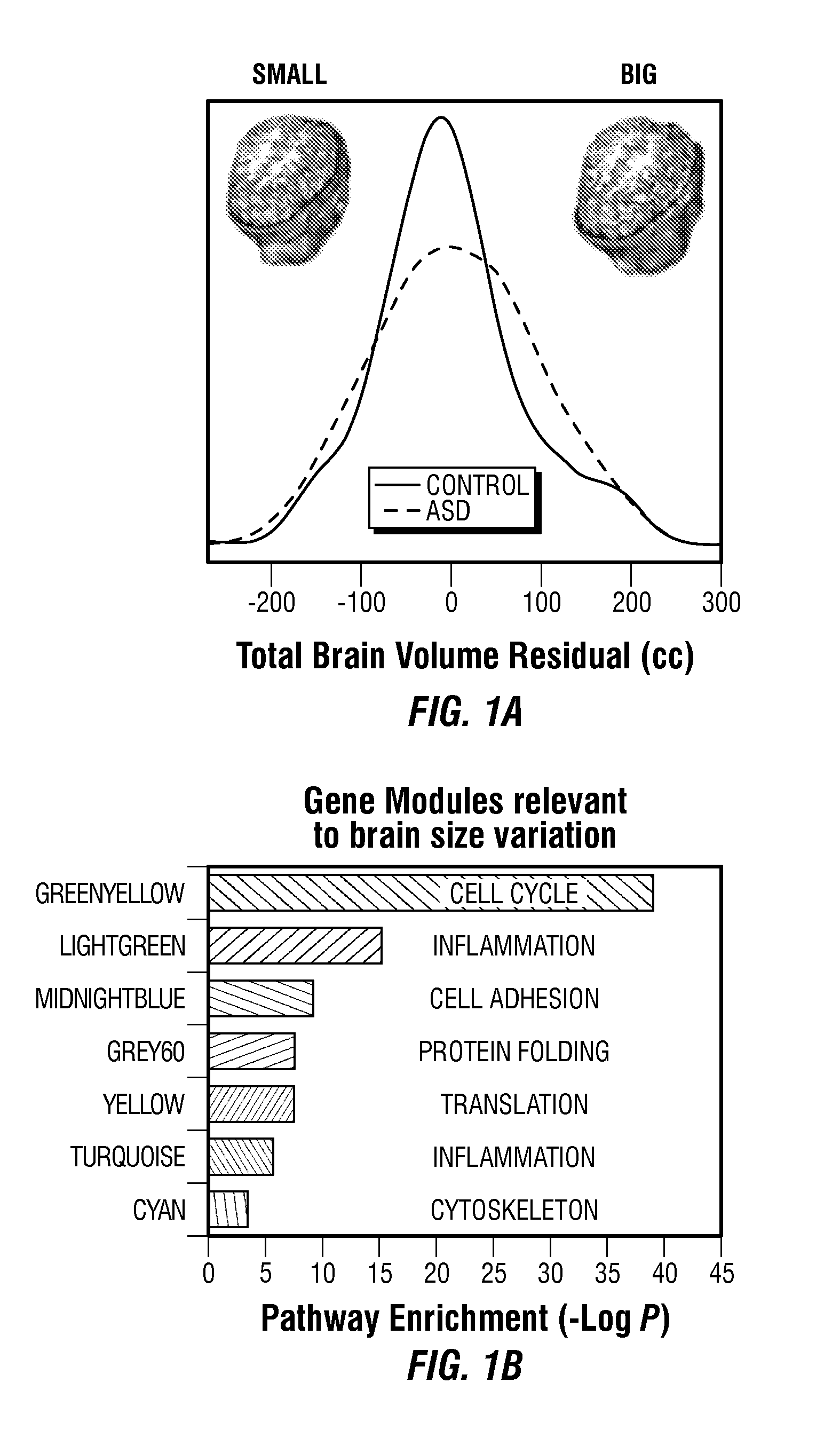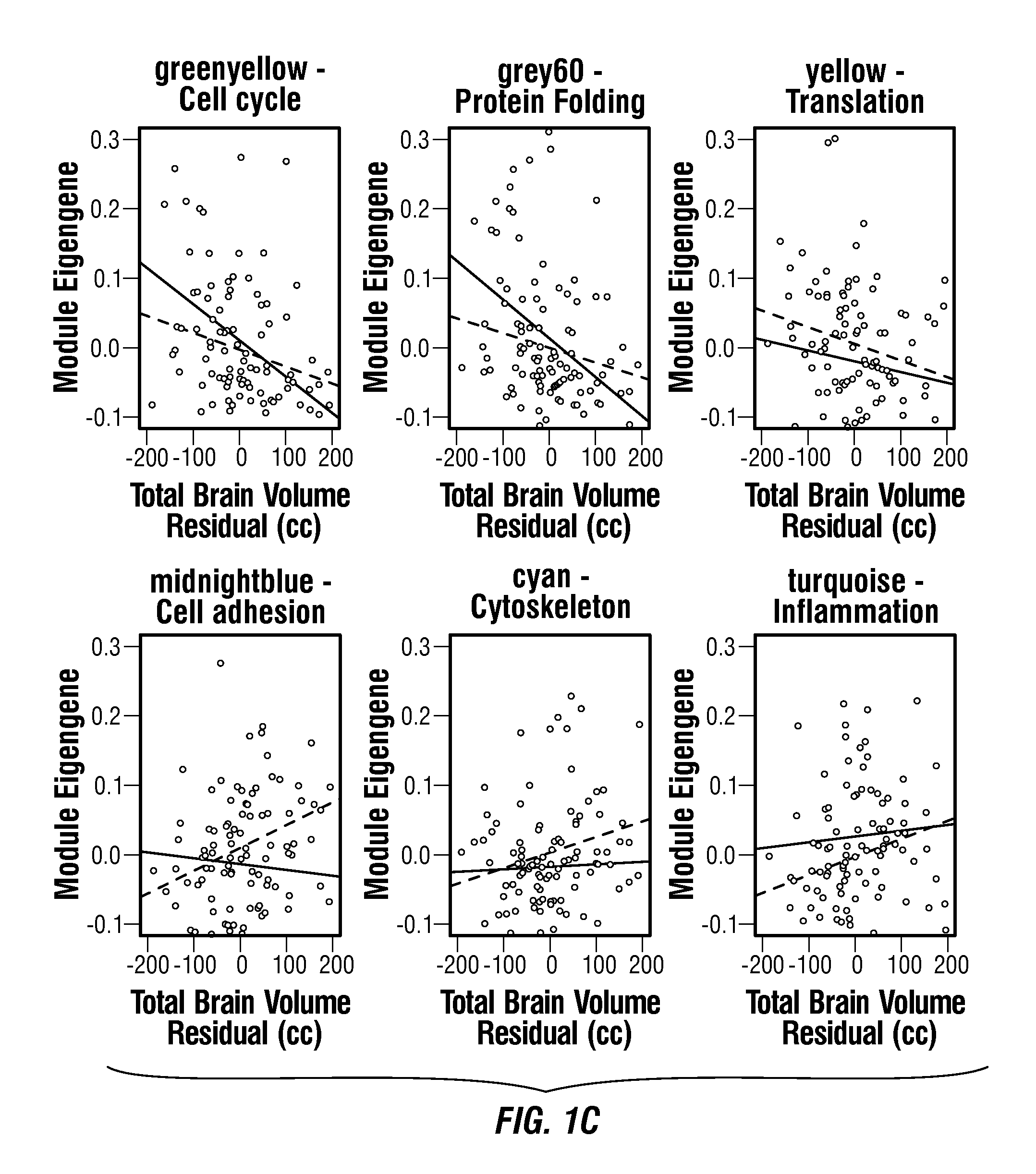Screening, Diagnosis and Prognosis of Autism and Other Developmental Disorders
a technology for applied in the field of screening, diagnosis and prognosis of autism and other development disorders, can solve the problems of low specificity, poor sensitivity, and inability to perform prior screening, diagnostic and prognostic prior art using biological measures
- Summary
- Abstract
- Description
- Claims
- Application Information
AI Technical Summary
Benefits of technology
Problems solved by technology
Method used
Image
Examples
example 1
Disrupted Gene Networks in Autistic Toddlers Underlie Early Brain Maldevelopment and Provide Accurate Classification
[0147]Genetic mechanisms underlying abnormal early neural development in toddlers with Autism Spectrum Disorder (ASD) remain unknown, and no genetic or functional genomic signatures exist to detect risk for ASD during this period. The objective in this example was to identify functional genomic abnormalities underlying neural development and risk signatures in ASD.
[0148]A general naturalistic population screening approach was used to allow prospective, unbiased recruitment and study of ASD and control (typically developing and contrast) toddlers from community pediatric clinics. Whole-genome leukocyte expression and MRI-based neuroanatomic measures were analyzed in a discovery sample of 142 males ages 1-4 years. Co-expression analyses were applied to identify gene modules associated with variations in neuroanatomic measures and a candidate genomic signature of ASD. Cla...
example 2
Additional Methods, Analyses, and Results
Subjective Recruitment, Tracking and Developmental Evaluation
[0230]All toddlers were developmentally evaluated by a Ph.D. level psychologist and those that were younger than 3 years at the time of blood draw were tracked every 6 months until their 3rd birthday when a final diagnosis was given. Only toddlers with a provisional or confirmed ASD diagnosis were included in this study. Toddlers were recruited via the 1-Year Well-Baby Check-Up Approach, a new general population based screening approach designed to identify toddlers with an ASD around the 1st birthday or from general community sources (e.g., referred by a friend, or response to the website). In brief, the 1-Year Well-Baby Check-Up Approach utilizes a broad band screening tool, the CSBS DP IT Checklist) implemented at the routine first year pediatric exam. The recent study, which included the participation of 137 pediatricians who implemented >10,000 CSBS screens, showed that 75% of ...
example 3
Age-Related Changes in Gene Expression in ASD and Non-ASD Controls
[0271]Age-related changes in ASD signature genes from infancy to young childhood were analyzed and compared to non-ASD controls. We discovered several patterns of age-dependent expression changes across ASD signature genes, including but not limited to the following three examples: First, genes were identified that showed main effects of diagnosis (ASD vs Control) and no statistically significant age-related changes (FIG. 13A; ASD—light grey vs Control—dark grey). For these genes (which are in the minority of all ASD signature genes), absolute expression level predicted diagnostic classification regardless of age at testing. Second, other genes were identified that showed main effects of diagnosis plus main effects of age (FIG. 13B); these represented a large portion of all ASD signature genes. Thus, for these genes knowledge of absolute expression level could give erroneous classification unless age at testing was ta...
PUM
| Property | Measurement | Unit |
|---|---|---|
| concentration | aaaaa | aaaaa |
| weight | aaaaa | aaaaa |
| weights | aaaaa | aaaaa |
Abstract
Description
Claims
Application Information
 Login to View More
Login to View More - R&D
- Intellectual Property
- Life Sciences
- Materials
- Tech Scout
- Unparalleled Data Quality
- Higher Quality Content
- 60% Fewer Hallucinations
Browse by: Latest US Patents, China's latest patents, Technical Efficacy Thesaurus, Application Domain, Technology Topic, Popular Technical Reports.
© 2025 PatSnap. All rights reserved.Legal|Privacy policy|Modern Slavery Act Transparency Statement|Sitemap|About US| Contact US: help@patsnap.com



